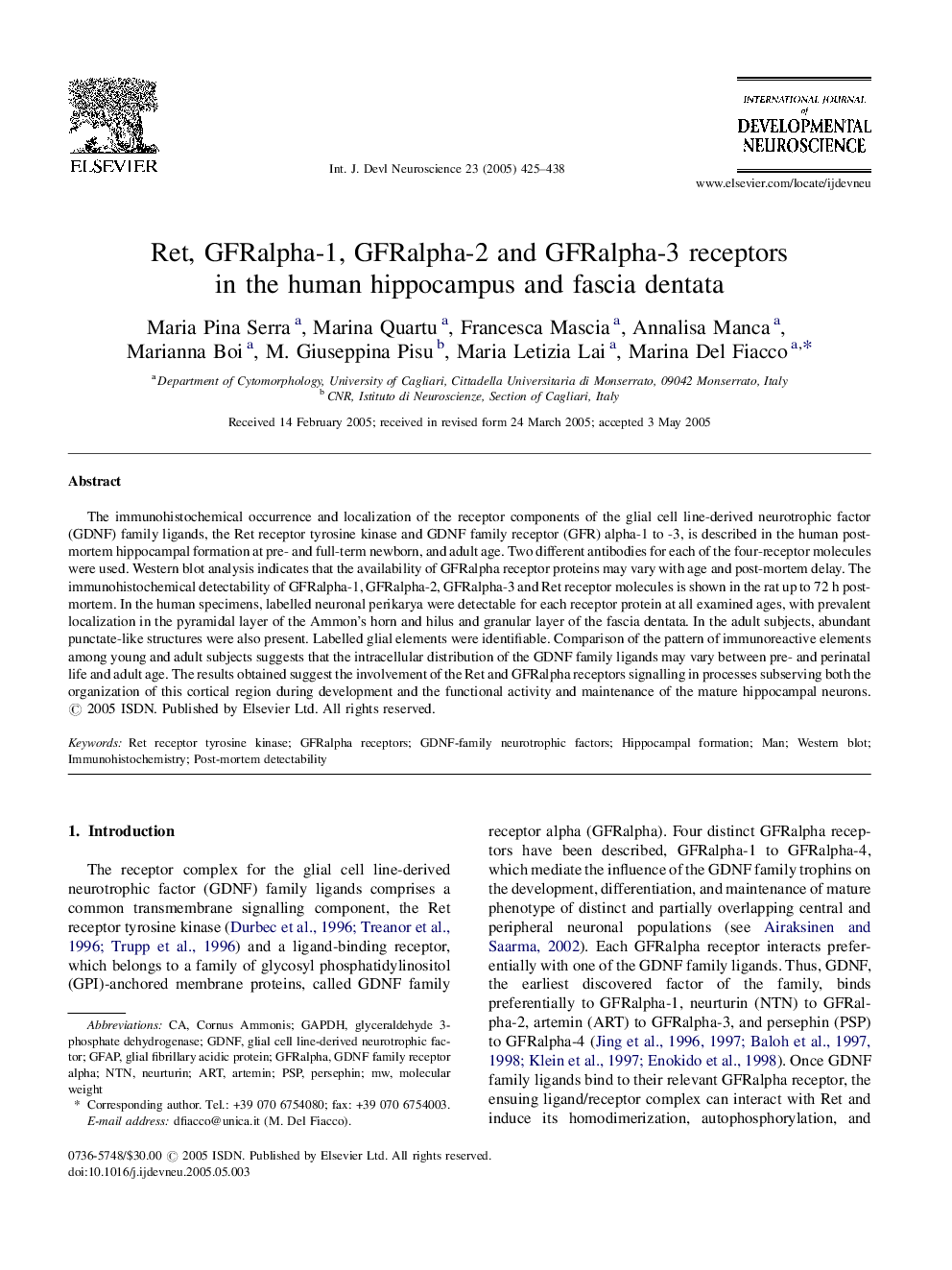| Article ID | Journal | Published Year | Pages | File Type |
|---|---|---|---|---|
| 9933574 | International Journal of Developmental Neuroscience | 2005 | 14 Pages |
Abstract
The immunohistochemical occurrence and localization of the receptor components of the glial cell line-derived neurotrophic factor (GDNF) family ligands, the Ret receptor tyrosine kinase and GDNF family receptor (GFR) alpha-1 to -3, is described in the human post-mortem hippocampal formation at pre- and full-term newborn, and adult age. Two different antibodies for each of the four-receptor molecules were used. Western blot analysis indicates that the availability of GFRalpha receptor proteins may vary with age and post-mortem delay. The immunohistochemical detectability of GFRalpha-1, GFRalpha-2, GFRalpha-3 and Ret receptor molecules is shown in the rat up to 72Â h post-mortem. In the human specimens, labelled neuronal perikarya were detectable for each receptor protein at all examined ages, with prevalent localization in the pyramidal layer of the Ammon's horn and hilus and granular layer of the fascia dentata. In the adult subjects, abundant punctate-like structures were also present. Labelled glial elements were identifiable. Comparison of the pattern of immunoreactive elements among young and adult subjects suggests that the intracellular distribution of the GDNF family ligands may vary between pre- and perinatal life and adult age. The results obtained suggest the involvement of the Ret and GFRalpha receptors signalling in processes subserving both the organization of this cortical region during development and the functional activity and maintenance of the mature hippocampal neurons.
Keywords
GDNFGDNF family receptor alphaRet receptor tyrosine kinaseNTNPSPGAPDHGFAPArteminImmunohistochemistryhippocampal formationGlial cell line-derived neurotrophic factorManneurturinARTMolecular weightWestern blotPersephinGlial fibrillary acidic proteincornus ammonisglyceraldehyde 3-phosphate dehydrogenase
Related Topics
Life Sciences
Biochemistry, Genetics and Molecular Biology
Developmental Biology
Authors
Maria Pina Serra, Marina Quartu, Francesca Mascia, Annalisa Manca, Marianna Boi, M. Giuseppina Pisu, Maria Letizia Lai, Marina Del Fiacco,
